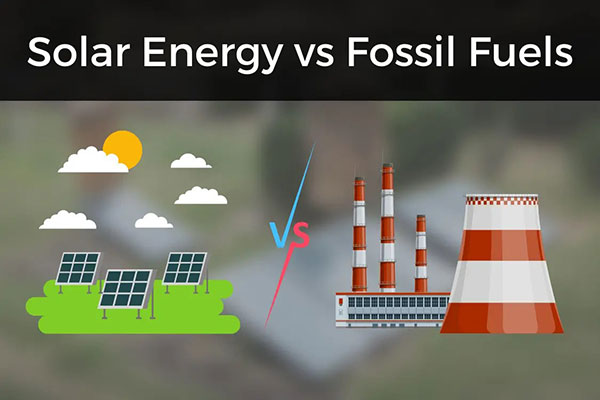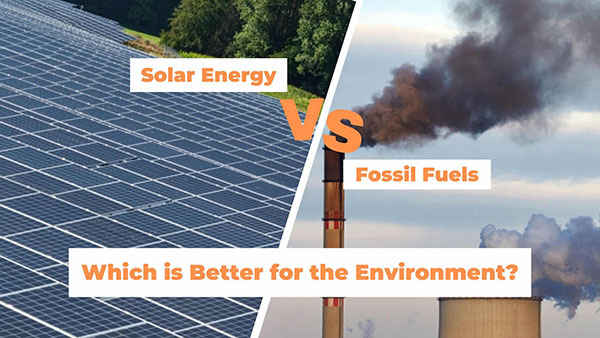
Elevating Solar Power
Solar power is a clear innovation in the world of renewable energy for its technological breakthrough and efficiency. The flawlessness of this power source lies in the fact that it is capable of drawing power directly from the sun, which makes it not only unlimited but also promotes a greener way to live. Apart from an obvious source of inexhaustive power, solar installations have achieved a rise of more than 480% over the last decade, a tendency illustrating acceptance and feasibility. Such an immense scale of progress is facilitated by the pioneering advancements in photovoltaic technology, which make solar panels increasingly
cost-effective and efficient. So far, the cost of solar energy has
plunged by 89% since 2009, proving to be the
cheapest energy source across many countries. To add to this, solar power radically
diminishes carbon footprint; for instance, a single solar farm is expected to save approximately 29,300 tons of CO2 emission per year.
Battery-Powered Energy Production
The concept of battery-powered energy production implies the enhancement in the energy efficiency of power sources by storing the excessive energy produced in the evening or night, instead of feeding it into the grid. I believe that battery-powered energy production continues the trend of sustainable energy reliance for the future, although this source remains less efficient due to high cost and practicabilities problems. Thus, the question of the volume of energy generated and saved for consumption throughout the day is crucial for every household, yet this technology is emerging rather than being well-implemented in households.
Environmental Consequences of Energy Choices
The issue of energy may have an impact on the environmental state in various ways. It may affect air and water quality, animal and plant habitats, and global climates. Thus, one significant benefit of selecting solar energy alternatives is
environmental advantages. There are various environmental challenges related to discretionary energy sources. For example, coal plants represent the most extensive source of carbon dioxide emissions in electricity production worldwide, contributing to climate change and poor air quality. Conversely, the solar option avoids most of the pollution associated with burning fossil fuels. In addition, solar farms may be established on non-arable land, thereby preventing agricultural resources and limiting habitat alteration.

Solar Energy: Potential and Sustainability
The potential for capturing energy in the sun is almost limitless. There is more than 173,000 terawatts of solar energy striking the upper atmosphere, compared to approximately 89,300 terawatts of power used by all of the sea currents on the planet. It also denotes more than 10,000 instances the Earth’s total energy use. Solar power could account for a substantial amount of our energy mix because of its availability, reliability, and renewability. Moreover, as technology improves, solar power is becoming more productive and easier to handle, ensuring that it will be accessible in abundance even when consumers require it. As a result, simplicity, security, and sustainability make solar power a vital element of one’s electricity production.
Economic Perspectives on Energy Transition
The transition to renewable energy, and solar power in particular, is not just an environmental requirement but an economic opportunity. Analysts predict that the value of the global renewable energy market will reach 1.5 trillion $ by 2025, which indicates the economic prospects of this transition. Investing in renewables is believed to be investing in the future, whereas solar energy constitutes a significant part of it. As a matter of fact, the lowering price of solar panels and their increased efficiency become an advantage rather than an obstacle to investment. It is believed that businesses and governments will invest in solar energy in the future due to the relatively low long-term costs of energy, stable fixed price, and economic prospects in terms of increased rates of employment, energy security, and cost avoidance concerning climate change and pollution caused by burning fossil fuels.
Comparing Long-term Costs of Solar and Fossil Fuels
In the long term, the economic analysis compares the costs of re-granting the solar panel and the costs of fossil fuels. If one takes into account the life of solar panels, which exceeds 25 years, one can see that the change in solar panels pays off many times. A study by the International Renewable Energy Agency shows that solar power costs have fallen by approximately 82 percent since 2010. What is more, all this time the price of “dirty” fossil fuels only fluctuated and by implementing a carbon tax the price can steadily increase. Thus, solar panel investments are long-term, while the price of energy is fixed and low and includes no environmental costs from the extraction and burning of fossil fuels.
I think that the debates on the necessity of subsidizing may not take into account the fact that fossil fuels have been subsidized for many decades. At the same time, the goal of subsidizing solar and other renewables is to take from and give to others. The International Energy Agency reports that there was $320 billion worth of consumption subsidies to fossil fuels in 2019. These subsidies are not temporary or aimed to support the industries in times of need; they intend to keep fossil fuel the prime source of energy and develop dependency on it. Moreover, while subsidies can distort the free market, promoting the development of less efficient companies, subsidies and other incentives to solar energy, such as tax incentives and rebates, in this case, are supposed to develop the market and make it more competitive with the already established sources of energy.
Renewable energy, with solar leading the way, is being brought to levels of investment not seen before. About $160 billion was invested in solar energy worldwide in 2019. Future technologies are becoming a reality now due to these investments. This may not be only because it is cleaner and more advantageous in the long term. As such, it can and should be invested in as a hedge to the volatility of fossil fuel energy dependent on wars, strikes, and speculations that surpass the crude form of existence.
The first thing that comes to one’s mind when thinking of the global energy pattern is that it is paradoxical. The paradoxes of reliance on fossil fuels are multiple. One of them is a glaring disregard for a clear scientific consensus that it is time to make the transition to renewables. In the light of the alarming pace of climate change, coal, oil, and gas still account for roughly 84% of the world’s total energy consumption. It happens though the prices of new technologies in the area, solar, and wind in the first place, have fallen, and renewables have either become cheaper or competitive with traditional energy sources. The paradox of this situation is rooted in the solid inertia of energy systems and infrastructure. Yet another important aspect of the same problem is the sheer economic and political weight of the biggest industry in the world. The fossil fuel industry, being a major economic powerhouse, heavily influences the rates of change in it. As a result, despite G20 leaders’ commitment to shift away from fossil fuels, emissions remain at colossal levels, not least because the G20’s subsidies for fossil fuels are still substantial and undermine any attempt to take effective measures. In conclusion, a paradoxical situation in which economic interests come in direct confrontation with humanity’s survival has become apparent.
Fossil Fuel Subsidies: Economic and Political Dimensions
Fossil fuel subsidies estimated by the International Monetary Fund to reach $5.2 trillion globally in 2017 represent one of the critical elements of the energy’s economic and political profile. Although the subsidies are often associated with assurance of national energy security, their argument is also based on the unparalleled affordability and maintenance of those working in fossil fuel sectors in the unstable and challenging economic environment. Nonetheless, such subsidies distort the market in a variety of ways and undermine the investments in the development of renewable energy technologies while maintaining a reliance on the sources contributing to environmental pollution and climate change. Fossil fuel subsidies persist today due to the vested interests and political complications that define energy’s global profiles and sustainability makes one of the cleanest and most efficient energy sources a foundation of the energy switch around in its distinct global role.

Solar Energy’s Influence on the Energy Shifts at a Global Scale
Today, solar energy is one of the forms of energy directly associated with the global shifts towards its sustainability. The new global challenge defined by the Paris Agreement’s targets sets the world on a path in which this energy works to achieve the most rapid development. In addition, the sun emits regularly dramatically more energy in one day than the world consumes in one year; the cost of production of solar panels or photovoltaic cells also has been substantially reduced leading to enormous increases in the use of solar energy. The increasing share of countries around the world turn to solar energy in the wake of the new green agenda becoming the critical foundation for one of the most sustainable forms of energy, which is no longer an alternative to one producing carbon.
Introduction
A study comparing the costs between solar and fossil fuel electricity unveils a convincing argument for solar. The costs of an energy source should not be limited to just what it takes to build but extend to include all the expenditures over the energy source’s lifespan. Solar, in this case, has at or close to zero fuel costs and continuous decreasing installation outlays. Rather, fossil fuels’ energy costs rely on both the fluctuating prices of the fuels and the massive costs associated with environmental remediation. An article published on Forbes indicates that solar is now the
cheapest form of energy in most regions, particularly when the levelized cost of electricity is taken into consideration. The advantages of solar well exceed these costs as solar plants usually require less maintenance than other typical power plants. This paper provides a cost comparison between solar and fossil fuel electricity and assesses energy prices without subsidy bias.
Cost comparison between solar and fossil fuel electricity
A fair measure of the costs and benefits of a program between solar and other energy sources is the consequences of subsidies. Regardless of the truth that barriers exist to the viability of solar energy village power, the negative consequences of fossil fuel subsidies on solar and fossil fuel costs are worth noting. Subsidies for oil, coal, and gas have over the decades served to skew the market and called in favor of traditional fuels by irrationally reducing the costs of these three major pollutants. Without fossil fuel subsidies, the actual cost of oil, coal, and natural gas have been illustrated to increase substantially. In essence, when the market is neither calling nor pushing, solar energy is the lucrative decision, not the just correct option.
Lifecycle Cost Analysis: From Installation to Operation
Having a good handle on total lifecycle costs gives a more economically accurate and precise picture of how much onset utility costs. Lifecycle cost, in this case, denotes all the costs which will ever incur through the solar energy source beginning from installation. As such, the cost of the equipment is the biggest cost but as stated above such systems have lifetimes greater than 25 years, energy costs are negligible in nature, and as such the cost is written off slowly, thus, on average, the cost of electricity is less. On the other hand, the fossil fuel plant costs incur continuous fuel cost, even maintenance, in addition to environment compliance. Hence, as asphalt is not considered in the lifecycle because it is not definite, the studies show that over the solar power plant’s lifecycle, it is significantly less in cost per kilowatt-hour than that of the fossil fuel plant, as a whole. The studies also found the coupe to be true when we went further and added externalities such as health and environment costs to the lifetime costs of these types of plants.
Potential for Profiting from Solar Investments
Today, investment opportunities in the solar power industry are appreciated not only for their contribution in terms of the benefit but due to the untimely financial opportunities also. The sun power technology prices are sinking and efficiencies are rising, hence offering a good payback period potential and offer an electorate return on investment. Most of these owners covered both residential buildings and commercial infrastructure through various mechanisms such as net metering, which could sell extra energy to the grid, renewable certificates, and much more, to increase their income. Today, solar technology companies are valued at billions of dollars generating tremendous financial turnouts for developing bulk solar infrastructures and promoting the mission of clean energy.


